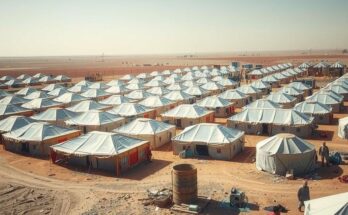In 2024, the DGM reported 479,908 returns of Haitians to Haiti, with 272,713 deportations, 167,069 repatriations, and 207,195 voluntary returns. October featured the highest returns, nearing the government’s goal of 10,000 expulsion weekly. Enhanced monitoring systems and improved conditions in transition centers were noted, while 3,316 migratory enforcement operations took place throughout the year.
According to the General Directorate of Migration (DGM) report for 2024, a total of 479,908 Haitians returned to Haiti. This figure comprises various categories: 272,713 were deportations, 167,069 returned through repatriation efforts, while 207,195 opted for voluntary repatriation. Additionally, 106 foreign nationals, including Americans and Cubans, were expelled from the Dominican Republic during the same period.
October 2024 marked a peak in expulsions and repatriations, with 40,715 Haitians returned, approaching the Dominican Government’s target of expelling 10,000 undocumented Haitians per week. However, this number significantly decreased in the following months, with November seeing 28,703 returns and December only 25,700.
The DGM report indicates the implementation of the second phase of the “Intelligent System for the Automation of Interdiction Trucks,” which incorporates advanced technology such as geolocation devices and internal video surveillance. Moreover, transition centers have been renovated or constructed at key locations like Haina, Benerito, Santiago, Dajabón, Elías Piña, and Jimaní, ensuring humane conditions for temporarily housed immigrants.
Throughout 2024, the Dominican Republic conducted 3,316 operations aimed at controlling the migratory status of foreigners. These operations were executed in collaboration with the Dominican Army and the National Police, ensuring a comprehensive approach to immigration management.
The DGM’s report highlights significant figures regarding the return of Haitians to their home country, emphasizing the high rate of deportations and repatriations. Notable efforts have been made to improve conditions for migrants through updated facilities and technological advancements. The steady decrease in returns in subsequent months suggests a shift in enforcement and immigration policies. Overall, this situation reflects ongoing immigration challenges faced by the Dominican Republic and the urgent need for comprehensive solutions that uphold human rights.
Original Source: www.haitilibre.com




